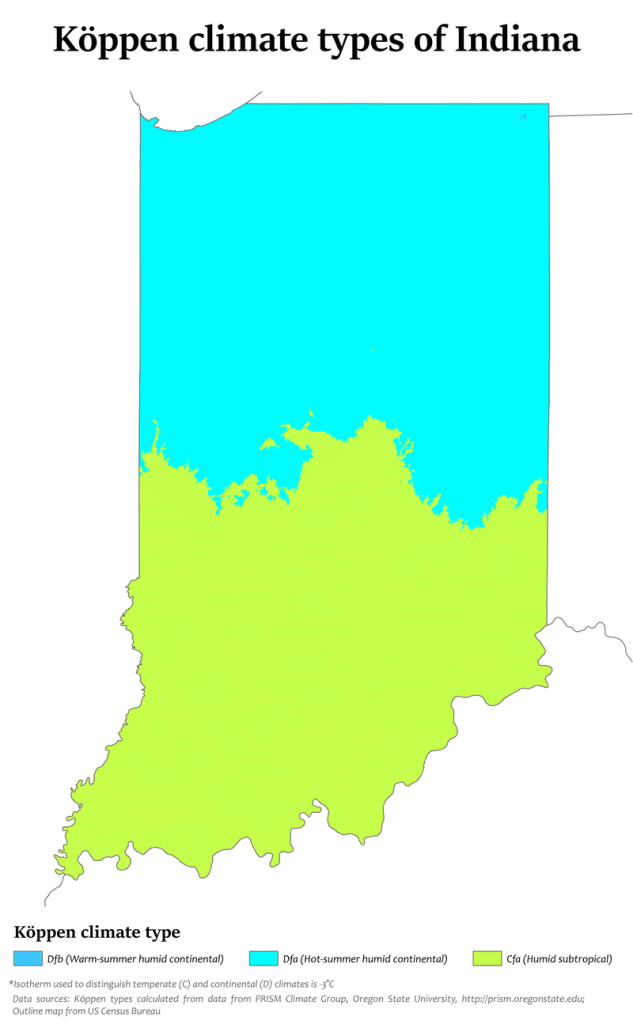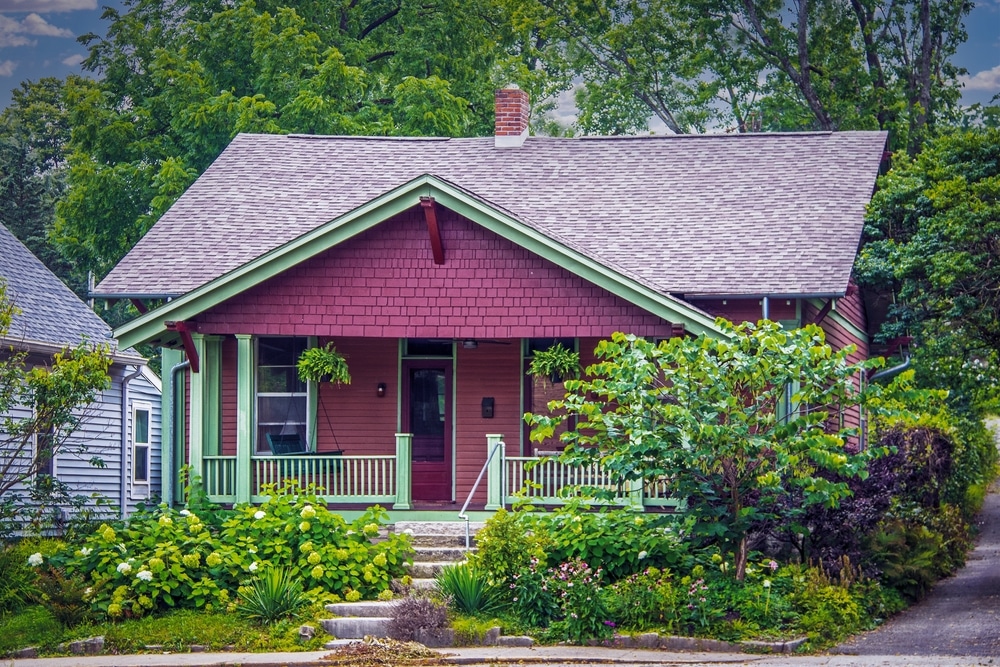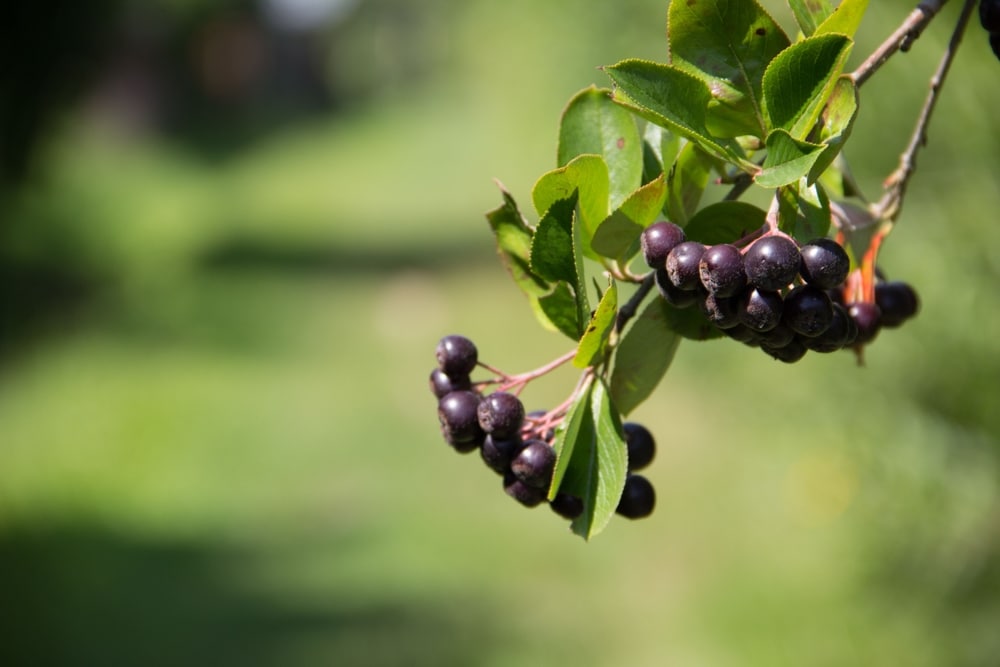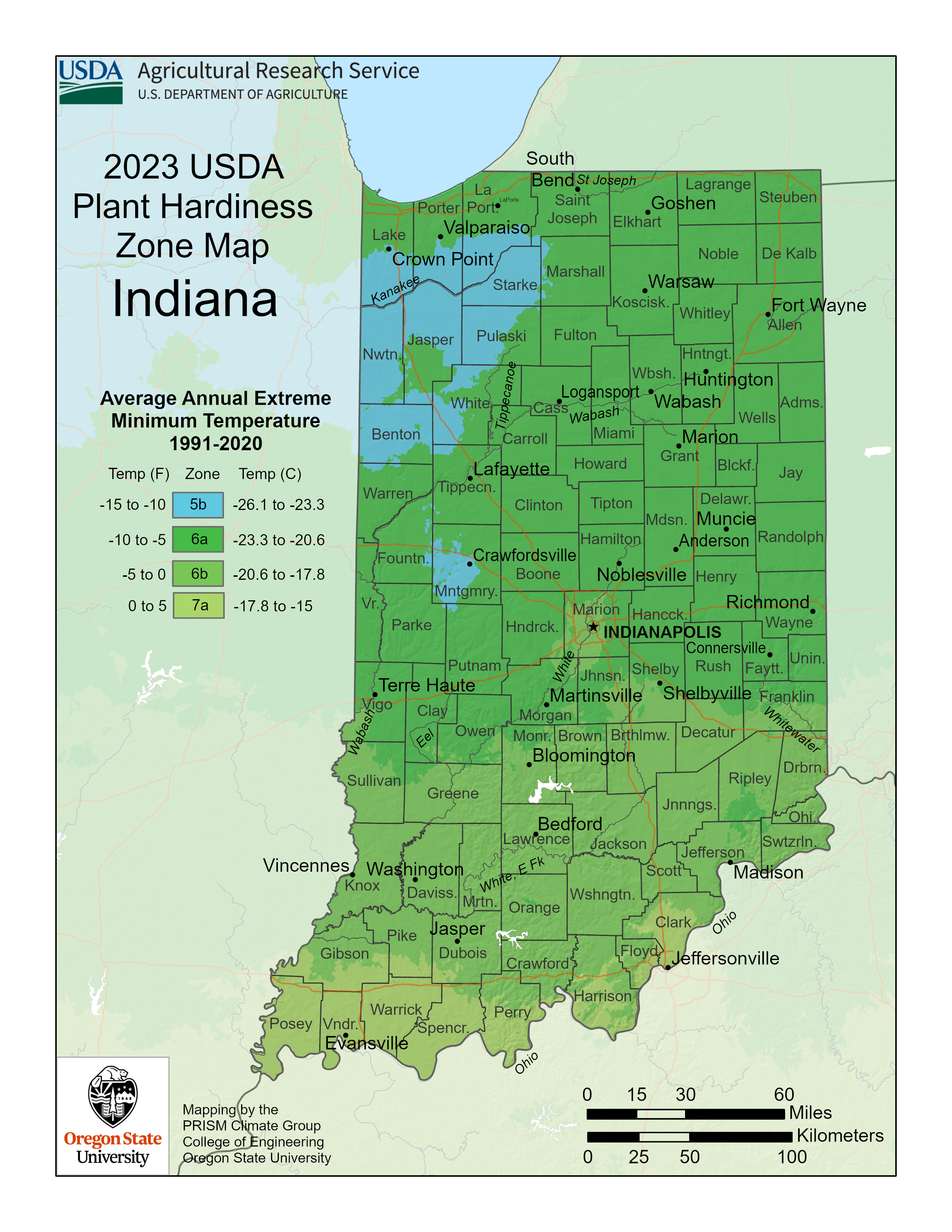Indiana Plant Hardiness Zones
| USDA Hardiness Zone | Average Minimum Extreme Winter Temperature Range Fahrenheit (°F) Celsius (°C) | Average Last Frost Date Range In Spring (Beginning Of The Growing Season) | Average First Frost Date Range In Autumn (End Of The Growing Season) |
|---|---|---|---|
| 5b | -15°F to -10°F -26.1°C to – 23.3°C | Mid to late April | Mid to late October |
| 6a | -10°F to -5°F -23.3°C to 20.6°C | Mid to late April | Mid to late October |
| 6b | -5°F to 0°F -20.6°C to 17.8°C | Early to mid-April | Mid to late October |
| 7a | 0°F to 5°F -17.8°C to -15°C | Early to mid-April | Early to mid-October |
Indiana Growing Conditions
General Climate

Indiana is split into two climate ranges. The north has a humid continental climate with hot summers, and the south has a humid subtropical one.
A humid continental climate has four distinct seasons, with large variations in temperatures within each season. This type of climate can experience severe cold and snow during the winter season, while the summers can bring extreme heat.
A humid subtropical climate has a temperate climate with humid, hot summers and cool to mild winters. This climate can experience wet, slushy winters.
In November of 2023, the US Department of Agriculture released an updated version of the Plant Hardiness Zone Maps within the United States of America. This new information gives insight into Indiana’s warming climate, which includes a major reduction of Zone 5 throughout the state and shows the shift into Zone 7 in the south for the first time.
This warming is changing the plant demographic of the state and allows you to push the limits and grow plants accustomed to a warmer climate.
Microclimates
USDA plant hardiness zones are an important starting point for your garden, but you’ll also need to consider microclimates.
Microclimates are areas where specific conditions create a climate different from the climate they’re situated in.
Buildings, fences, paved areas, or short hills and valleys can create these microclimates.
They can be as small as a space in your backyard or as large as a city.
In other words, learn about your local conditions from local experts to see if your garden falls into a microclimate.
Extreme Weather
Cool Winters
Indiana winters can be wet, cold, and slushy. From February to March, you can expect sleet, ice, freezing rain, and hail. The growing season is shorter, so sometimes you need to get creative when growing your favorite plants and veggies.
Luckily, all you need is a well-lit window to grow some of your favorite herbs all year long. South or east-facing windows do best, as they get the morning sun or generate the most heat. Try growing chives, oregano, and even basil for fresh herbs, even during the winter months.
Extreme Heat
Most of Indiana experiences four distinct seasons, with extreme temperature ranges within each season. Just as the winters can get ice cold, summers can get super hot! Plants under heat stress can grow slower and can even wilt if under-watered or not protected from the afternoon sun.
Mulching your plants in the springtime can help your plants during the hottest parts of the summer season. Mulch can trap moisture under the surface, making it harder to evaporate and therefore allowing the plant to absorb more water. Mulch also helps reduce the temperature around the plant.
Growing Season
Indiana has a shorter growing season at approximately 170 days. The southern area of the state can experience slightly longer growing seasons, while the cooler areas in the north can see less than 170 days.
The last frost is around late April for most of Indiana and early to mid-April for zone 7a. The first frost occurs mid to late October for most of the state and early October for the southern area.
Indiana Gardening Tips

Try New Plants For A Warming Climate
With parts of Indiana entering a warmer climate zone, there are fun garden experiments to try (and some to avoid) when understanding what kind of plants will do well as the state gets warmer.
Try growing more exotic perennials and annuals that do best in a warmer climate, like Zone 6b or 7a, or even try 7b-loving plants if you live in a warmer microclimate bubble. An example would be veggies like sweet potatoes, as they require a longer, hotter growing season to come to fruition.
This can also look like direct sowing seeds outdoors or transplanting seedlings into the garden earlier than previous years!
Keep It Safe With Trees And Shrubs
Pushing the limits on perennial flowers and veggies can be fun, but keep it safe with the trees and shrubs. It is always recommended to stick with woody plants accustomed to a cooler climate zone. This helps buffer for potentially harsh winters that could still happen as the climate shifts and becomes more erratic.
These types of plants are a bigger investment, add more structure and permanence to the garden space, and can be affected by colder climates, causing die-off at the branches while the roots still maintain life. This can cause an ill-looking plant and can be quite sad when you have to replace the entire woody plant because limbs and branches have died off.
Plant Cool-Season Crops
Even though Indiana’s climate is warming, the growing season is still on the shorter side. Getting a jump on spring veggies is an advantageous way to make the most of the growing season. For a quick start on your veggie garden, try cold-hardy crops like radishes, leafy greens, carrots, beets, and turnips, which will thrive in the cool spring season.
Consult With Local Professionals
Consulting with local gardening professionals allows you to benefit from their experience with your area’s conditions, the plants that do well there, and overall best practices.
Indiana Plant Suggestions

Trees
- Red Maple (Acer rubrum)
- American Basswood (Tilia americana)
- Black Oak (Quercus velutina)
Shrubs
- Black Chokeberry (Aronia melanocarpa)
- Silky Dogwood (Cornus amomum)
- Northern Bush Honeysuckle (Diervilla lonicera)
Flowers
- Cut-Leaved Toothwort (Cardamine concatenata)
- Blue-Eyed Mary (Collinsia verna)
- Pale Purple Coneflower (Echinacea pallida)
Vegetables
- Carrots (Daucus carota)
- Beets (Beta vulgaris)
- Spinach (Spinacia oleracea)
Herbs
- American Ginseng (Panax quinquefolius)
- Common Mountain Mint (Pycnanthemum virginianum)
- Dill (Anethum graveolens)
Spices
- Wild Ginger (Asarum canadense)
- Garlic (Allium sativum)
- Turmeric (Curcuma longa)
Fruits
- Persimmon (Diospyros virginiana)
- Pawpaw (Asimina triloba)
- Black Raspberry (Rubus occidentalis)
Succulents
- Wild Stonecrop (Sedum ternatum)
- Six-Sided Stonecrop (Sedum sexangulare)
- Allegheny Annual Stonecrop (Sedum telephioides)
Disclaimer
Any of the above can change and is not exhaustive.
Treat anything above like a good starter guide. Then use that as a foundation as you consult with local gardeners, professionals, forecasts, guides, and organizations.

